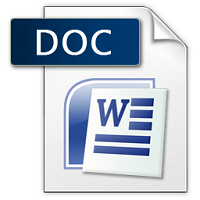₹198.00
Scroll down for Match your questions with Sample
Note- Students need to make Changes before uploading for Avoid similarity issue in turnitin.
Another Option
UNIQUE ASSIGNMENT
0-20% Similarity in turnitin
Price is 700 per assignment
Unique assignment buy via WhatsApp 8755555879
Description
SESSION AUG-SEP’23
PROGRAM MASTER OF BUSINESS ADMINISTRATION (MBA)
SEMESTER IV
COURSE CODE & NAME DITF403 Crypto-currency and Blockchain
Assignment Set – 1
Questions
- A). How does a crypto currency differ from traditional forms of currency?
Ans:
Cryptocurrency and traditional forms of currency differ in several fundamental ways, including their nature, issuance, governance, and the underlying technology.
Here are key distinctions between cryptocurrency and traditional currency:
Nature and Form:
Cryptocurrency: Cryptocurrencies are digital or virtual currencies that use cryptography for security. They exist purely in
Its Half solved only
Buy Complete from our online store
https://smuassignment.in/online-store/
MUJ Fully solved assignment available for session SEPT 2023.
Lowest price guarantee with quality.
Charges INR 198 only per assignment. For more information you can get via mail or Whats app also
Mail id is aapkieducation@gmail.com
Our website www.smuassignment.in
After mail, we will reply you instant or maximum
1 hour.
Otherwise you can also contact on our
whatsapp no 8791490301.
- A). How does an ERP system handle data integration and synchronization across different departments?
Ans: Enterprise Resource Planning (ERP) systems are designed to streamline business processes and improve collaboration by centralizing data and operations across different departments within an organization. Data integration and synchronization are critical aspects of ERP systems, ensuring that information flows seamlessly between various departments.
Here’s how an ERP system typically
B). How does block chain technology improve data transparency and trust compared to a centralized database used in ERP systems?
Ans:Blockchain technology enhances data transparency and trust compared to centralized databases used in traditional ERP (Enterprise Resource Planning) systems. The key features of blockchain that contribute to this improvement include decentralization, immutability, transparency, and cryptographic
- A). Are there any specific industries or sectors that have successfully implemented block chain and ERP together?
Ans:As of my last knowledge update in January 2022, several industries have started to explore and implement blockchain technology alongside ERP systems to enhance transparency, security, and efficiency in their operations. However, it’s important to note that the adoption of blockchain in conjunction with ERP systems is still evolving, and specific use cases
B). What role does consensus play in block chain technology, and how does it differ from the decision-making process in an ERP system?
Ans:Here’s an overview of the role of consensus in blockchain technology and how it differs from the decision-making process in an ERP (Enterprise Resource Planning) system:
Role of Consensus in Blockchain Technology:
Decentralization: Consensus enables a decentralized network of nodes to agree on a shared and consistent version of the
Assignment Set – 1
Questions
- A). How does the CAP theorem impact the design and operation of block chain networks?
Ans:The CAP theorem, formulated by computer scientist Eric Brewer, describes the inherent trade-offs that exist among Consistency, Availability, and Partition Tolerance in distributed systems. According to the CAP theorem, it is impossible for a distributed system to simultaneously provide all
B). How does block chain ensure the security of transactions?
Ans:Blockchain ensures the security of transactions through a combination of cryptographic techniques, decentralization, consensus mechanisms, and immutability.
The following features contribute to the security of transactions on a blockchain:
Decentralization: In a blockchain network, transactions are not stored in a central location. Instead, they are distributed across multiple nodes (computers) in the network. This decentralization reduces the risk of a single point of failure or attack, enhancing the overall security of
- A). How does consensus work in a block chain network?
Ans:Consensus is a crucial mechanism in blockchain networks, ensuring that all participants agree on the state of the distributed ledger. It involves a process by which nodes in the network reach a common and verifiable agreement on the validity and order of transactions.
Different consensus algorithms may be employed, each with its own set of rules and
B). What are the potential future developments in the block chain technology landscape?
Ans:The blockchain technology landscape is dynamic, and several potential future developments are expected to shape its evolution.
While predicting specific developments is challenging, several trends and areas of exploration are worth
- A). Explain the concept of smart contracts and their role in automating transactions in the supply chain.
Ans: Smart Contracts and Their Role in Automating Transactions in the Supply Chain:
- Smart Contracts Overview: A smart contract is a self-executing contract with the terms of the agreement directly written into code. It operates on a blockchain, and its execution is automated when
B). How does block chain technology ensure the immutability and integrity of land registry records, preventing unauthorized changes and reducing the risk of fraud?
Ans:
Blockchain technology ensures the immutability and integrity of land registry records by leveraging its core features, such as decentralization, cryptographic hashing, and consensus mechanisms.
Here’s


